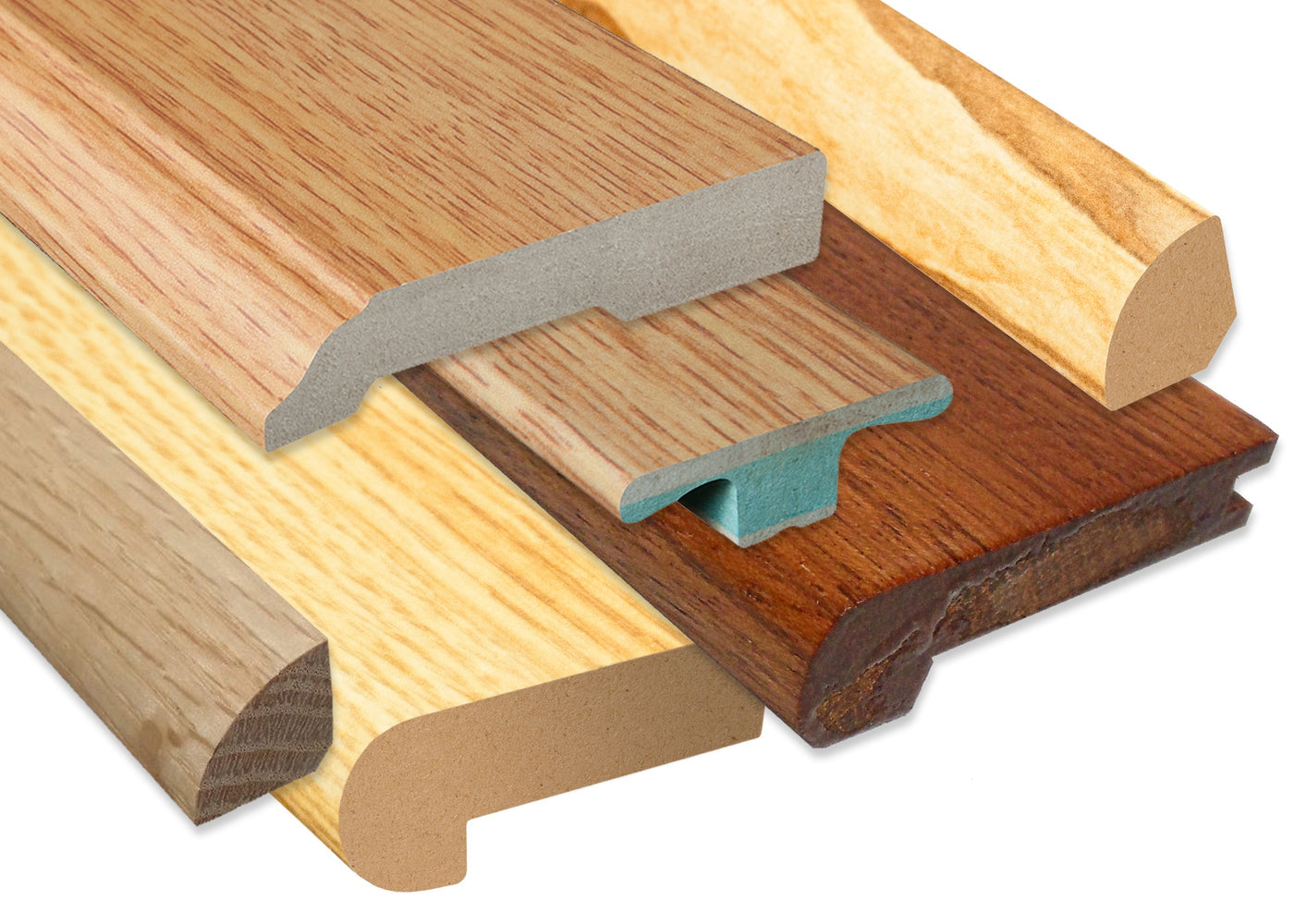FiltersFilter & Sort
Lumber Liquidators
1/2" x 2" x 78" Brazilian Cherry Reducer
$8.09/LFT$52.59/eachUnit price /UnavailableCoreLuxe
Alba Terrazzo .75 in wide x 7.5 ft Length Quarter Round
$2.19/LFT$16.43/eachUnit price /UnavailableCoreLuxe
Alba Terrazzo 3.25 in wide x 7.5 ft Length Baseboard
$3.99/LFT$29.93/eachUnit price /UnavailableCoreLuxe
Alba Terrazzo Waterproof 1.5 in wide x 7.5 ft Length End Cap
$5.99/LFT$44.93/eachUnit price /UnavailableCoreLuxe
Alba Terrazzo Waterproof 1.77 in wide x 7.5 ft Length T-Molding
$5.99/LFT$44.93/eachUnit price /UnavailableCoreLuxe
Alba Terrazzo Waterproof 1.89 in wide x 7.5 ft Length Reducer
$5.99/LFT$44.93/eachUnit price /UnavailableCoreLuxe
Alba Terrazzo Waterproof 2.25 in wide x 7.5 ft Length Low Profile Stair Nose
$6.99/LFT$52.43/eachUnit price /UnavailableDream Home
Alpenheim Oak Laminate 0.75 in wide x 7.5 ft Length Quarter Round
$2.19/LFT$16.43/eachUnit price /UnavailableDream Home
Alpenheim Oak Laminate 3.25 in wide x 7.5 ft Length Baseboard
$3.99/LFT$29.93/eachUnit price /UnavailableDream Home
Alpenheim Oak Laminate Waterproof 1.5 in wide x 7.5 ft Length Low Profile End Cap
$5.99/LFT$44.93/eachUnit price /UnavailableDream Home
Alpenheim Oak Laminate Waterproof 1.77 in wide x 7.5 ft Length Low Profile T-Molding
$5.99/LFT$44.93/eachUnit price /UnavailableDream Home
Alpenheim Oak Laminate Waterproof 1.89 in wide x 7.5 ft Length Low Profile Reducer
$5.99/LFT$44.93/eachUnit price /UnavailableBestTread
Alpenheim Oak Laminate Waterproof 2.25 in wide x 7.5 ft Length Low Profile Stair Nose
$6.99/LFT$52.43/eachUnit price /UnavailableDream Home
Amber Crest Oak Laminate 3-1/4 in. Tall x 0.63 in. Thick x 7.5 ft. Length Baseboard
$3.99/LFT$29.93/eachUnit price /UnavailableDream Home
Amber Crest Oak Laminate 3/4 in. Tall x 0.75 in. Wide x 7.5 ft. Length Quarter Round
$2.19/LFT$16.43/eachUnit price /UnavailableBestTread
Amber Crest Oak Waterproof Laminate 1 in. Thick x 2.25 in. Wide x 7.5 ft. Length Stair Nose
$6.99/LFT$52.43/eachUnit price /UnavailableDream Home
Amber Crest Oak Waterproof Laminate 1.5 in. Wide x 7.5 ft. Length End Cap
$5.99/LFT$44.93/eachUnit price /UnavailableDream Home
Amber Crest Oak Waterproof Laminate 1.77 in. Wide x 7.5 ft. Length T-Molding
$5.99/LFT$44.93/eachUnit price /UnavailableDream Home
Amber Crest Oak Waterproof Laminate 1.89 in. Wide x 7.5 ft. Length Reducer
$5.99/LFT$44.93/eachUnit price /UnavailableDream Home
American Hackberry Laminate 3-1/4 in. Tall x 0.63 in. Thick x 7.5 ft. Length Baseboard
$3.99/LFT$29.93/eachUnit price /UnavailableDream Home
American Hackberry Laminate 3/4 in. Tall x 0.75 in. Wide x 7.5 ft. Length Quarter Round
$2.19/LFT$16.43/eachUnit price /UnavailableBestTread
American Hackberry Waterproof Laminate 1 in. Thick x 2.25 in. Wide x 7.5 ft. Length Stair Nose
$6.99/LFT$52.43/eachUnit price /UnavailableDream Home
American Hackberry Waterproof Laminate 1.5 in. Wide x 7.5 ft. Length End Cap
$5.99/LFT$44.93/eachUnit price /Unavailable















































